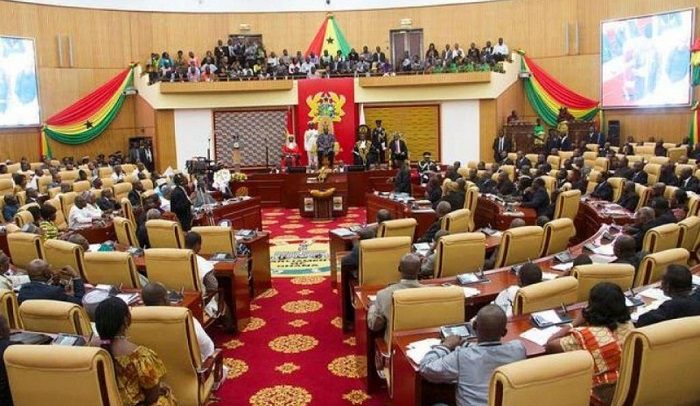Parliament on Tuesday approved a US$100 million loan from the International Development Association (IDA) to finance the Productive Safety Net Project – 2.
The financing agreement between the Government of Ghana (represented by the Ministry of Finance) and IDA was presented to the House on Wednesday, June 30, 2021, by the Minister of State at the Finance Ministry, Charles Adu Boahen, on behalf of the sector minister.
It has a repayment period of 25 years with an interest charge of 1.35 per cent and service charge of 1.48 per cent.
Background
The Government said Ghana had recorded a relatively high growth over the past two decades.
According to the Finance Ministry, economic growth increased from 3.7 per cent in 2000 to 6.5 per cent in 2019 driven by, among other factors, a competitive business environment, fast growing private sector, strong commodity price – increases and the start of commercial oil production in 2011, resulting in the achievement of a lower-middle-income status.
The Finance Committee, in a report presented to plenary, said the country’s favourable economic growth performance has been accompanied by a substantial reduction in the prevalence of poverty from 36 per cent in 1991/1992 to 8.2 per cent in 2016/2017 (using consumption expenditure as the indicator).
“This decline is largely due to the result of the implementation of key social protection interventions,” Chairman of the Committee, Kwaku Kwarteng stated.
He narrated that these interventions included Livelihood Empowerment Against Poverty (LEAP) cash transfer programme; Labour-Intensive Public Works (LIPW) programme; the Ghana School Feeding Programme (GSFP); National Health Insurance Scheme (NHIS); Education Capitation Grant; and Productive Inclusion (PI) programme.
He reported that despite these innovations and remarkable progress and using Ghana’s multidimensional poverty index released by the Ghana Statistical Service, it came to the fore that 14 million of the estimated 3 million population are categorised to be poor.
Poverty levels also differ markedly across the country, with substantially higher rates of poverty in rural areas compared to urban areas. In 2016/2017, the overall poverty rate in rural areas was 39.5 per cent, five times higher than the corresponding rate in urban areas, at 7.8 per cent.
Extreme poverty in the rural areas was 15.6 per cent, while it was just one (1) per cent in urban centres, overall, and extreme poverty rates in 2016/2017 were also higher in the administrative regions of Volta (now Volta and Oti regions), Upper East, Northern (now Northern, Savannah and North East regions) and Upper West than in other parts of the country, the report stated.
It added that as part of the efforts by the government to end extreme poverty, the Ghana Productive Safety Net Project (GPSNP) was designed and it’s being implemented with US$81 million (US$60 million credit from the World Bank and US$21 million grant from DFID) to improve the productivity of the poor and strengthen the country’s social safety net systems. The GPSNP became effective in June 2019 and will end by December, 2022.
The project was restructured in August 2020 to intensify government’s social safety net response to the domestic adverse effects of the COVID-19 pandemic.
In response to the pandemic, the GPSNP also enabled the government to double the regular transfer amounts to LEAP households as well as developing and implementing an information, communication, and engagement strategy in relation to the COVID-19 pandemic for social safety net programme households and communities.
By Ernest Kofi Adu, Parliament House


